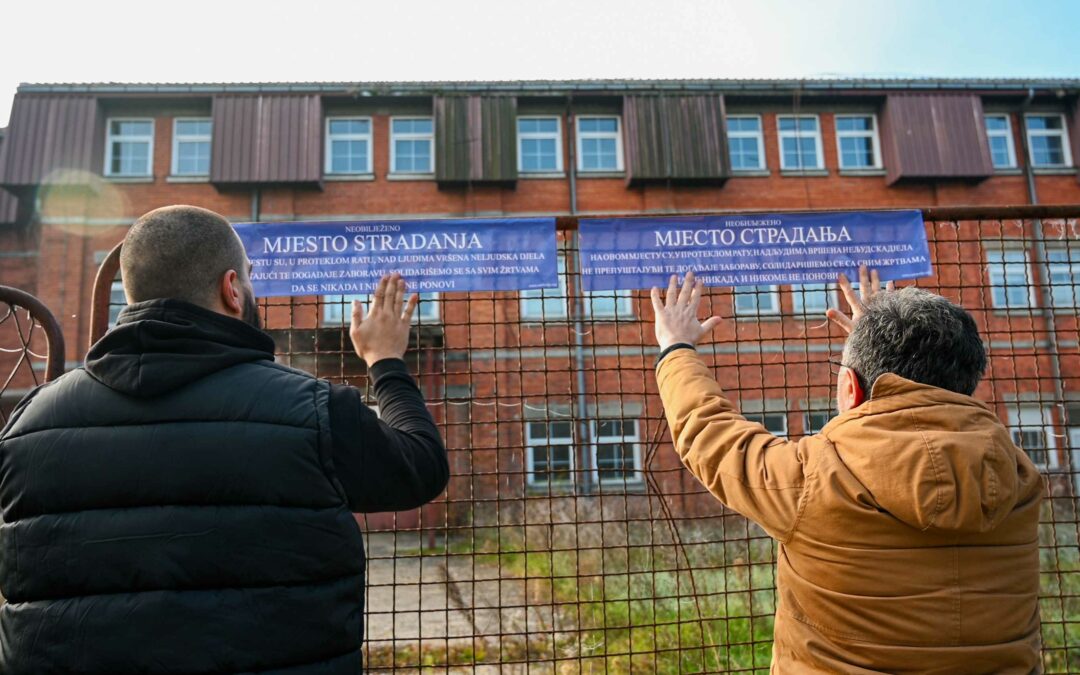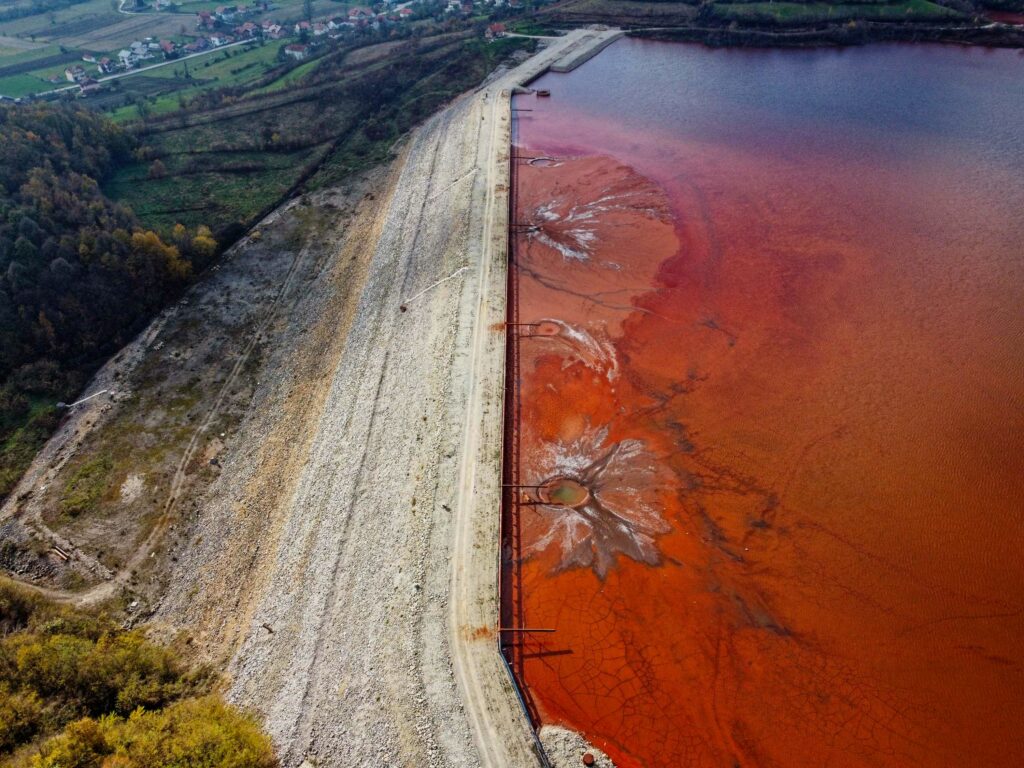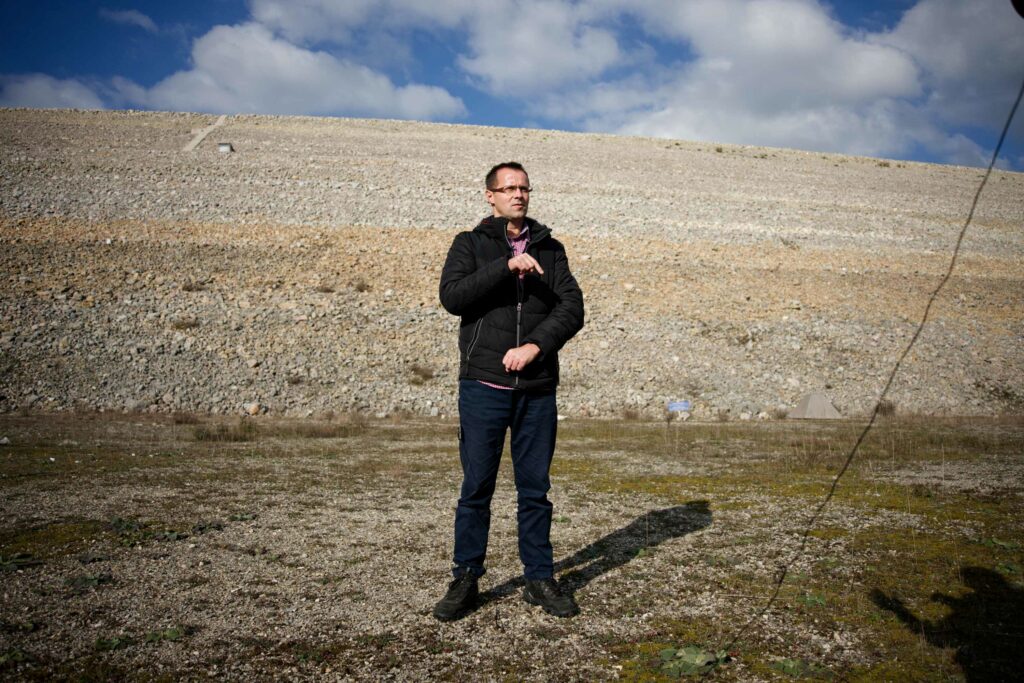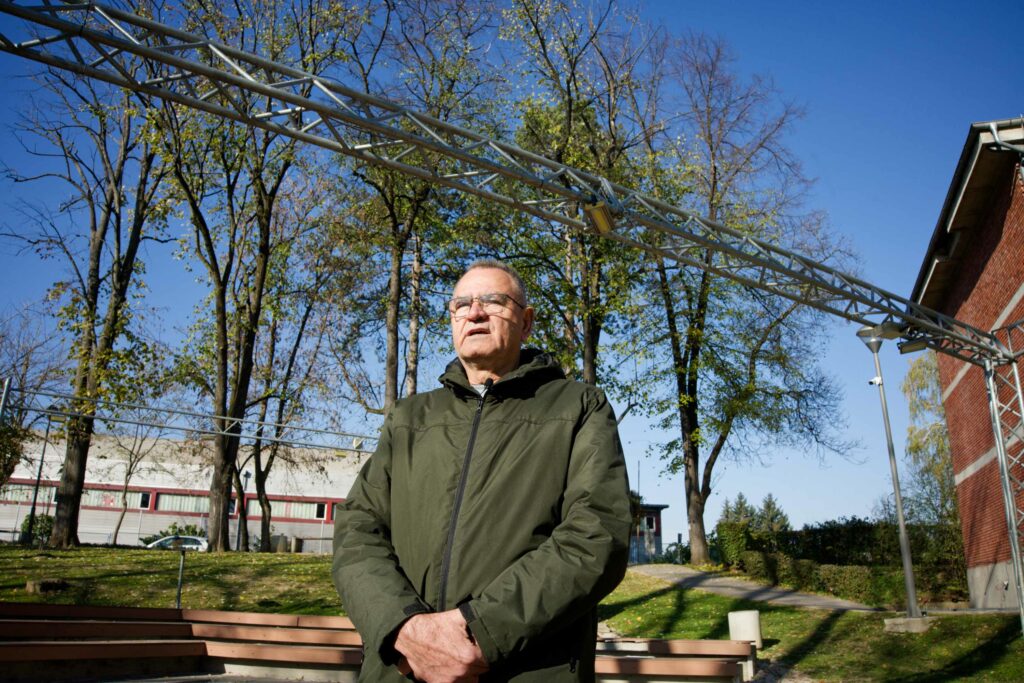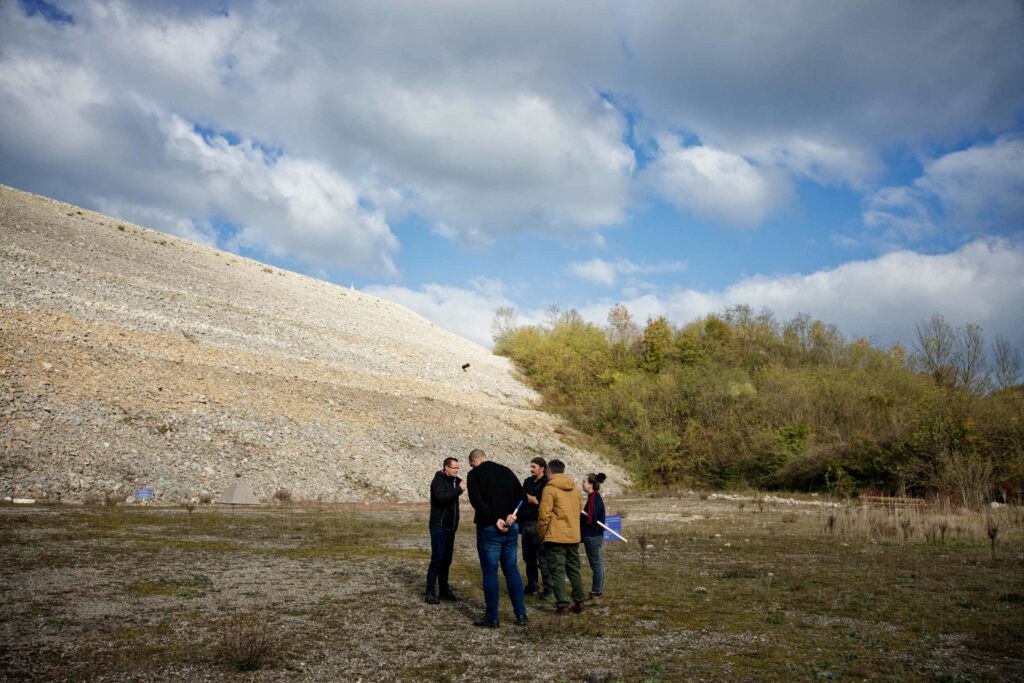Peace activists of the Centre for Nonviolent Action marked several former detention facilities and sites of suffering in the area of Zvornik, Lukavac, Prnjavor and Teslić. At the same time, the action to mark unmarked sites of suffering in Croatia was started by activists of the Youth Initiative for Human Rights. Having previously marked Pavillion 22 at the Zagreb Fair, they also marked the “Ribnjak” site in Marino Selo near the town of Lipik.
Since 2015, the Centre for Nonviolent action has been marking unmarked sites of suffering in BiH and has marked more than 140 sites in Bosnia and Herzegovina to date.
The Desanka Maksimović Primary School in Petkovci and the Red Silt Dam near Zvornik, the Sloga Shoe Factory in Prnjavor and the Tannery in nearby Vijaka, the Abattoir facility in Modrac near Lukavac and other sites in Teslić have been recognised as sites of detention in a number of judgements of the ICTY, the Court of Bosnia and Herzegovina and other courts in BiH, and several people have been convicted of crimes committed at these sites. To date, none of these sites have been marked, but more information about them and the related trials is available on the site for Marking Unmarked Sites of Suffering in BiH.
In addition to the fact that many sites of suffering, including detention facilities, have not been marked to this day, former prisoners, survivors and families of those who were killed are often prevented from accessing these sites. The Centre for Nonviolent Action has stated that visiting sites like these and marking them is also an appeal to the authorities, especially those at the local level, to provide support for victims fighting for the right to memory, instead of presenting obstacles, to allow unimpeded access to the locations, as well as the permanent marking of such sites.
From 14 to 16 July 1995, the Desanka Maksimović Primary school in the settlement of Petkovci, Municipality of Zvornik served as a site of detention for Bosniaks from Zvornik, Srebrenica and surrounding villages. On 14 July 1995, members of VRS transported the prisoners from a detention site in Bratunac to the primary school in Petkovci where they proceeded to abuse and torture them, and many of the prisoners were killed. In the night of 14 July or early morning of 15 July 1995, the remaining prisoners were taken to the Red Silt Dam near Petkovac where they were summarily executed.
Nedžad Avdić, who lives in Srebrenica today, is one of the two survivors of the execution at the Red Silt Dam. He is trying to rescue his story from being forgotten, he testified before the ICTY and co-authored the book “The Hague Witness”.
“I used to think there was no need to talk about it, that things were clear. I was cold towards Srebrenica, the suffering and all that, I thought it had all been shown already and was clear. But as the years passed, I realised sites like these needed to be marked, because of widespread denial. Not for us victims, but for the sake of future generations. It is a way to recognise the suffering of the victims and honour the innocents who were killed for no reason. I support these activities and I think this is the path to the future. Without truth, without recognising the crimes and dealing with them, there can be no true or lasting peace. As a victim, I am deeply hurt by the denial and the silence, not just by those who committed crimes, but by society as a whole. We should not be silent, and I don’t mean we should speak out to call for hatred, but that we should deal with this properly,” says Avdić.
The Abattoir facility in Modrac, Municipality of Lukavac, was also marked during this action. From June to October 1992, this site was used as a detention site for Serb civilians from the village of Puračić and surrounding villages.While marking the Sloga Shoe Factory in Prnjavor, which had served as a detention site for Bosniaks from May to mid-September 1992, we were joined by Drago Knežević, president of the Prisoners of War Association of the City of Derventa.
“I have been with this organisation all across BiH, visiting sites of suffering of all three peoples, and I am always ready to join them in marking sites of suffering of people of different faiths who were imprisoned in camps. When I visit these sites, I remember the camp in Derventa and what I went through. I sympathise with these people, whatever their faith. Though politicians may disagree with this, the suffering and everything we went through in the camps in Derventa, they went through in other camps across BiH, irrespective of faith and ethnicity. In Derventa, in the camps there were people who were killed, and here I learned that there was a Muslim man in Prnjavor who was killed and he’d done nothing wrong, he had been brought from his home the way we had been brought and people had been brought to other camps. It’s important that children from all three sides learn about the suffering in the camps, to see the similarities in everyone’s suffering, because the criminals seem to have been copying each other. When I come to visit a camp where people were held, I see myself and other people and our suffering. Those of us who were imprisoned in camps, from all three ethnicities, when we meet and start talking about what we went through, it’s all similar. I feel empathy because I know what they’ve been through and I get emotional. I like meeting with these people and sharing our difficulties. We all feel better afterwards. I see every prison camp survivor as a brother in suffering, because he’s been through the same things I’ve been through. There is no other way, because everyone who’s been through the kind of suffering I’ve been through is like me,” said Drago Knežević.
In Vijaka, Municipality of Prijedor, we marked a former detention site for Bosniak and Croat civilians from the Derventa area that had been operational in the spring and summer of 1992. The prisoners were subjected to inhumane conditions and daily abuse, interrogations and beatings. One prisoner died as a result of his injuries.Activists of the Youth Initiative for Human Rights (YIHR) marked the site of Ribnjak in Marino Selo, City of Lipik, with the support of the Centre for Nonviolent Action. This was the site of an improvised detention facility where at least 24 civilians had been imprisoned, 18 of whom died. These activists had previously marked Pavilion 22 at the Zagreb Fair, a site that had been used to detain Serb civilians, where they were abused and most of whom were subsequently taken to Pakračka Poljana and executed. Several members of the Croatian Ministry of Interior (MUP) and the Croatian National Guard (ZNG) have been convicted of war crimes committed at these two sites.
“By marking the improvised prison of Ribnjak in the vicinity of Marino Selo in Požega-Slavonia County as a site of suffering of Serb citizens of the Republic of Croatia, we stand in opposition to enforced forgetting and neglect of victims who were unlawfully detained, tortured and killed in late 1991 and early 1992. By honouring victims who are not of Croat ethnicity, we stand in opposition to the dominant narrative that neglects, relativises and denies the suffering of “others”, which is widespread in Croatia. With this, we want to encourage and advocate for an accountable culture of memory that respects all victims of war, whatever their ethnicity or religion,” Margareta Blažević from the Youth Initiative for Human Rights explained.
During the war, several facilities in the Municipality of Teslić were used to detain Bosniaks and Croats. In this action, activists of the Centre for Nonviolent Action marked the former Territorial Defence building in Teslić which is today a residential building in the centre of town, but was used during the war as a detention site where Bosniak prisoners were beaten and killed. In the village of Pribinići, the Cultural Centre, post office and agricultural pharmacy warehouse were used as detention sites for 200 Bosniaks and Croats. In the night between 17 and 18 June 1992, 18 Bosniak prisoners were taken from detention sites in the village of Pribinići and were executed and buried in a mass grave at the “Bebe” site on Mount Borja. The Bebe area on Mount Borja was also marked as part of this action.
“In our 20th action to mark unmarked sites of suffering, we visited sites in Podrinje and Posavina. For ten years now, we have been visiting sites of suffering and honouring all victims and have marked 150 such sites to date. For ten years now, we have been crossing imaginary borders of memory that exist to limit memory and exclude some victims. We are proposing a different culture of memory where there is room for all victims, where memory is not exclusive to one ethnicity and where the culture of memory can show solidarity and support that ordinary people provide to each other. Our actions to mark unmarked sites of suffering that are most often subjected to silence and denial have been joined by a large number of people and this shows that solidarity crosses ethnic and national borders, that someone who was a prisoner feels solidarity with every prisoner, irrespective of their or their captors’ ethnicity. This is precisely what is important for us,” Tamara Zrnović, member of the Centre for Nonviolent Action, pointed out.
Video from action:

